Naked motorcycles have been in high demand in recent years, with customers looking for bold lines, character, and strong emotions, even more pronounced in the Hyper Naked category. The Monster and the MT-09 have all of that and more, but despite their similar numbers, they are quite different on the road!
Muscular and aggressive aesthetics, agile and efficient handling, and engines with plenty of torque and power set the tone for Hyper Naked bikes, which have attracted enthusiasts from super sport bikes or other smaller naked bikes, with the certainty that “here,” in the Hyper Naked category, they will find strong emotions and something that will catch everyone’s eye wherever they go.
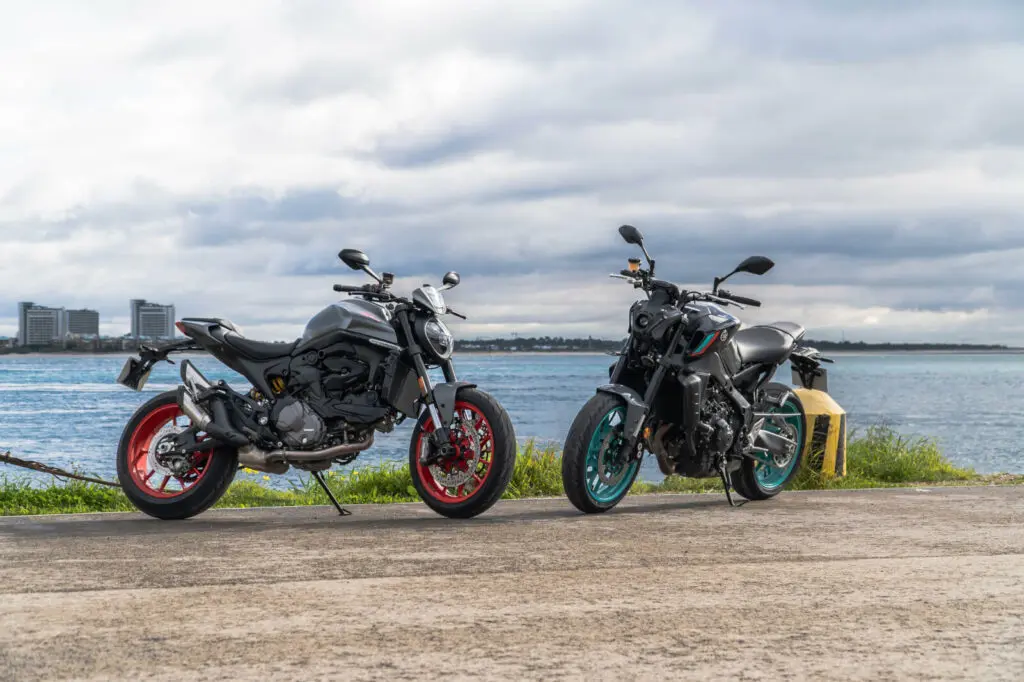
Both bikes in this comparison were significantly updated in 2021, in fact, they were more than just updates. Both Yamaha and Ducati received many improvements, but it was the older model (the Monster, which has been around for 30 years!) that truly broke with some of the Italian brand’s traditions.
NO TRELLIS FRAME

Usually the Ducati Monster had several displacement options, but currently it has only one: this 900 cc, more precisely 937 cc (compared to the previous 821 cc version) but with the same configuration, a 11º L-twin. With the increase in displacement came a power increase of 2 hp (not more because Euro5 is restrictive) to the current 111 hp at 9,250 rpm, and a significant increase in torque from 86 Nm to 93 Nm at 6,500 rpm. The engine block is also lighter, contributing to greater agility of the entire assembly, along with the new chassis. Here is the biggest change in the Monster, a model that always displayed the typical tubular trellis frame from the Bologna factory.
The tubes have been replaced by a small aluminum frame, with the engine as an integral part, in the style of its Superbike, the Panigale, but far from tradition, which disappointed some purists. Still, the total assembly is 18 kg lighter which, with a stronger engine and a chassis based on one of the best Superbikes of today, makes the new Monster very appealing. The aesthetics are typically Ducati, with the imposing fuel tank being the most important element and the rest being minimalist, but with almost perfectly combined shapes. The LED front headlight with DRL is more oval than before, the turn signals are very well integrated into the frame, and the new color TFT instrument panel, but there is more in the electronics. It features three riding modes (Sport, Touring, and Urban), ABS with 3 levels and cornering ABS, traction control with 8 levels, wheelie control, launch control, and bidirectional quickshift.

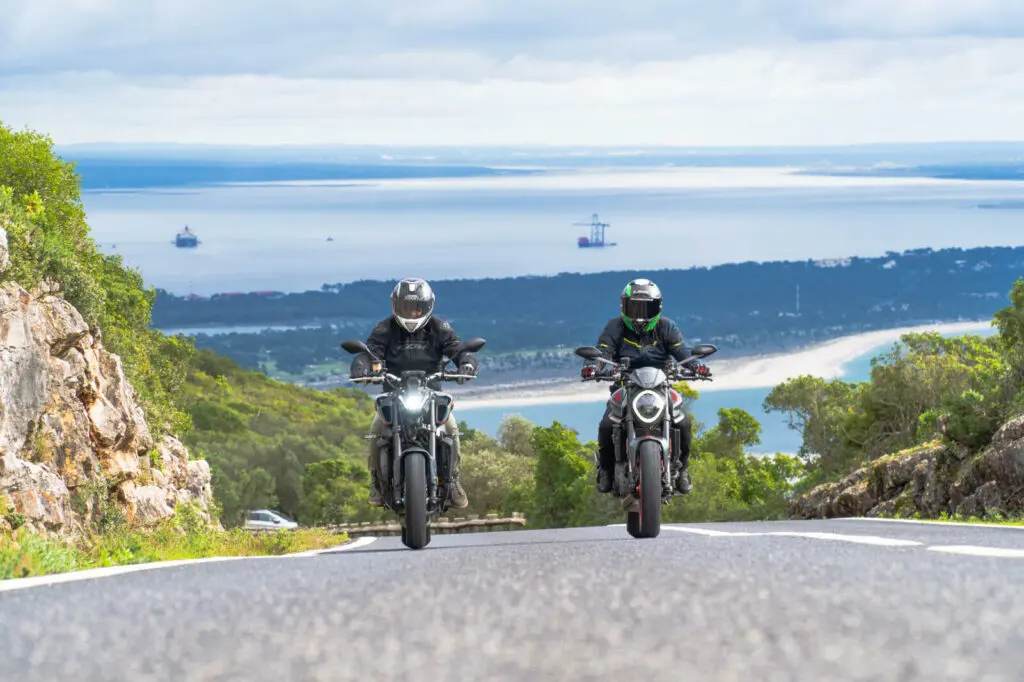
Despite the approximate numbers, the engines are very different. The Italian twin is smooth but not throughout the rev range, with a less linear increase in revs than the Japanese bike. The gearbox on the Italian is precise and well spaced, as are the engine modes, but in Sport mode the throttle response is too sensitive at the beginning of the travel when riding slowly, while Touring and Urban modes have a bit too much delay. The Japanese CP3 engine is much livelier and more responsive, to the point where it feels more powerful. The throttle feel is excellent in any mode, with a particularly precise and direct response in Mode 1, but still not abrupt when in slow situations. The quickshift works perfectly on both bikes, but with a slight advantage for the Yamaha.
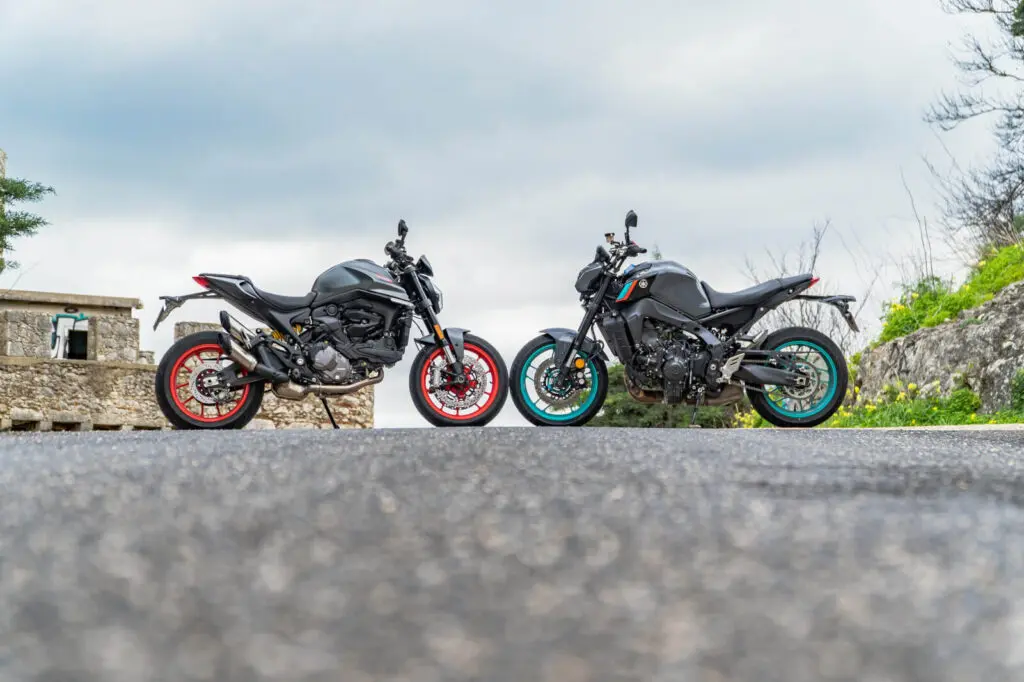
In the chassis both are very precise, especially on the smooth surface of the winding road where we did the photo session. Curves are their thing, both with a great feeling of safety and precision, but here it is Ducati that has a slight advantage, perhaps even due to the riding position that gives us the feeling of having a greater wheelbase. The braking and overall feel of the controls is excellent on both bikes, which is not surprising in two brands like Ducati and Yamaha. The behavior of the suspensions is very good even when the pace is faster. On rougher surfaces they are a bit too firm but, honestly, I prefer it that way because it allows for more abuse without scaring us. The fuel consumption is low for the performance they offer, with averages around 5.4l/100 km on the Ducati and 5.6l/100 km on the Yamaha as we checked on the instruments. The Ducati’s display is more visible and easier to consult and navigate the buttons on the switch than the Yamaha, which has a wheel on the right switch that is not very precise when we are in motion.
The seats are comfortable enough on both bikes, but like any hyper-naked, they are not designed and intended for a trip across Europe. However, we can ride for quite some time without getting a sore bottom.
ITALY VS JAPAN
In a highly contested final, it ends up being Yamaha that gives us more sensations, largely thanks to the three-cylinder engine, smooth but very powerful. In the rest they are different but balanced, but in the end the price difference also weighs in the verdict, with an advantage of about €2,000 for the Japanese!
Even more exclusive – The SP versions
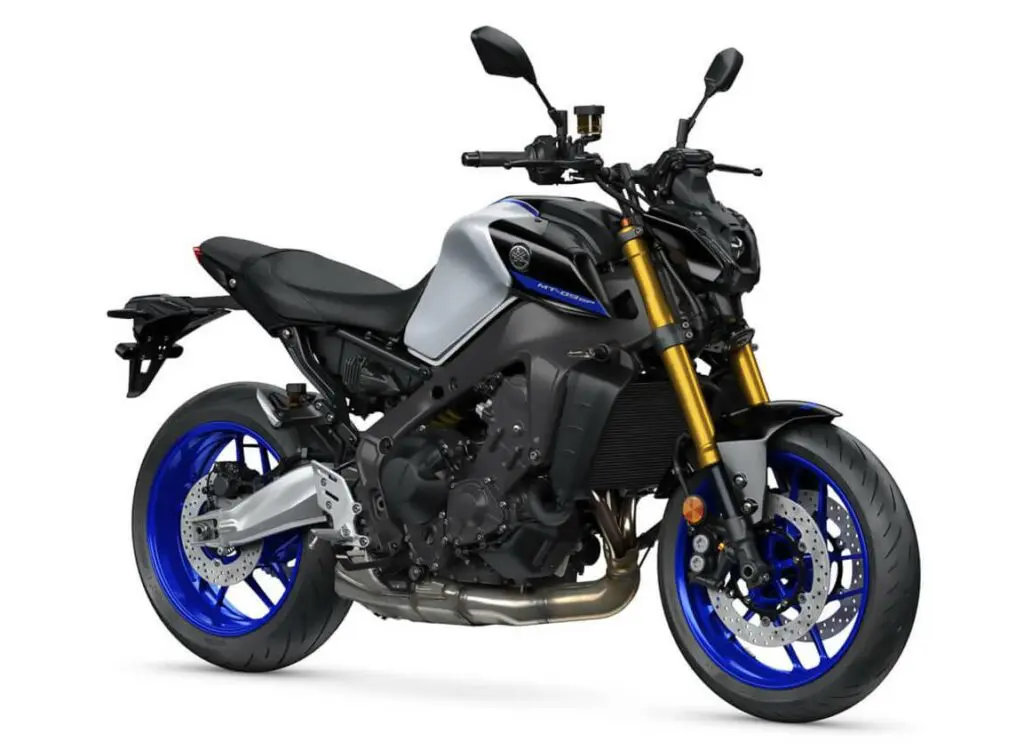
I participated in this work with great pleasure, being a fan of medium-displacement naked motorcycles. In these two machines, I naturally find pros and cons, but starting with the Monster, while it is true that its dimensions are becoming more minimalist, which is good in the city, it also seems to have lost some grandeur and even charm compared to the old 821. The handling is simple but works very well, like any Ducati, so you just want to lean more and more, and as for the engine, it offers good performance but the exhaust always seems too muffled, restricting performance and driving pleasure.
Driving pleasure is something that the MT-09 does not lack, a naked bike with supermoto traits, always asking for more throttle and a somewhat exaggerated driving style. The aesthetics do not enchant me, but the engine is sensational, while the handling is adequate but sometimes a bit bouncy on less perfect roads. That is why Yamaha has had an MT-09 SP in its range from the beginning, an exclusive machine in decoration but above all in handling through an improved front suspension and an Ohlins rear monoshock that make a difference. It also features various components with a black DLC coating, an aluminum anodized and brushed swingarm, cruise control, and a premium seat with double stitching. All this for a very acceptable price of €12,750.
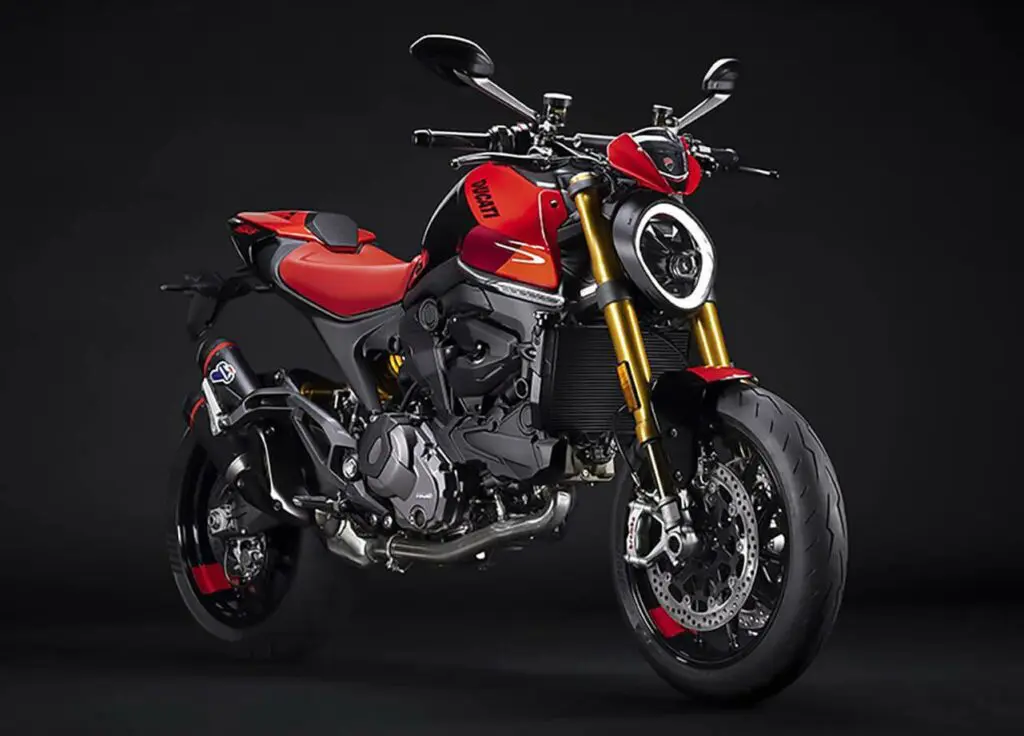
As for the Monster, it has just arrived on the market in the SP version. Aesthetically, it is very appealing and has many components that will certainly make many not even consider the base model. In addition to the exclusive color scheme, we have a golden Ohlins NIX30 fork that is fully adjustable and 0.6 kg lighter than the base version, a homologated Termignoni exhaust, red seat, and Ducati logo on the tank. In terms of braking, we find top-of-the-line Brembo Stylema calipers (also lighter) and we also have a lighter lithium-ion battery that reduces the total weight in running order by 2 kg. The SP also mounts a steering damper, Pirelli Diablo Rosso IV tires, and all the electronics have been recalibrated in terms of riding modes, with a Wet riding mode also available. The price of the Monster SP is €15,595, but personally, considering the equipment of this bike, it really makes you want to go for it!







